Read Time : 6 Minutes
How does a Heat Pump Work
Simply put, a heat pump is a device that transfers thermal energy from one point to another. A common example of this can be found in our refrigerators where the evaporation and cooling of a liquid is used to lower the temperature of the storage compartment. Nowadays, this technology can also be used to extract the potential thermal energy in the air outside, or even from the ground, feeding it directly into your home where it is compressed, and the heat transferred using a series of coils. It sounds like magic but the science behind it is relatively simple.
Although they use a small amount of electricity to run, heat pumps are considered highly efficient and clean because they don’t depend on the burning of fuel to create the heat. They perform well in moderate climates such as the UK and can provide heating during the winter, even at temperatures of -20 degrees Celsius. There are different two main kinds of heat pump depending on the type of medium they extract heat from, namely air or ground/water, and they are now beginning to be incorporated into modern builds on a regular basis.
Find out about the different types of heat pump here.
COMPARE PRICES FROM LOCAL INSTALLERS
Compare prices from local companies fast & free
Enter your postcode to compare quotes from leading professionals. We promise to keep your information Safe & Secure. Privacy Policy
Heat Pump Components
Heat has a useful property when it comes to keeping our houses and offices warm – it moves from a high temperature to a low temperature naturally. What a heat pump does is reverse this process using some simple science that pushes air from outside, warms it up and then feeds into your house. On the outside of an air source heat pump you will find a system of coils with refrigerant in it over which the outside air is drawn using an impeller or fan. The liquid in the refrigerant coils absorbs all the heat and, because it warms up, begins to evaporate. This gas then goes through a compressor that increases the temperature dramatically. The coil then moves inside the building towards some inner coils where the heat is released. The refrigerant meanwhile flows back outside where it picks up more heat and the process starts again.
The useful heat produced is pumped into air ducts and can be transported to various locations around the building or can be used to heat water that feeds into radiators. Ground source heat pumps work a little differently, getting their heat source from the ground outside or from a body of water.
These systems use either closed loop for the ground or open loop piping for water. Closed loop uses a continuous supply of refrigerant to perform the same sort of action as an air source pump whilst open loops uses the water from a well or lake to do the same job.
For larger scale installations, you might like to opt for an absorption heat pump which works in the same way as an air source one but uses ammonia instead of a refrigerant. These are more often found in industrial installations but recent developments have seen them being utilised for big commercial and domestic properties.
The other major component of any heat pump is the ducting that transfers the heat from the main source to the rooms in the house. The ducting is often the problem when it comes to retrofitting a house as it can be invasive and expensive to install. For this reasons, some domestic properties go for mini-split heat pumpsthat are less problematic to install.
One of the newer initiatives in heat pump technology is the development of thermodynamic panels that transfer both the heat from air and solar radiation to warm up your water and rooms. These can generally be fitted on the side of a house but can also be found on the roof, looking a lot like solar panels.
Types of heat pumps available
If you’ve read our other pages, you’ll know all heat pump heating systems work the same way. They extract heat from an external source, increase that heat, and then move it around. The only real difference between them is where they source the initial heat and how they share it. Heat pumps are not a new technology and therefore their application is relatively widespread. As such, you can find lots of little variants, but the following represent the most common systems.
- Air to air
- Air to water
- Water source
- Ground source (also known as geothermal)
Air to air heat pumps:
An air to air system is the easiest to explain because we’ve all seen these devices in action. Indeed, you’ll have used one in your life because they’re also known as air conditioners. It’s a lesser-known fact that air conditioners can also provide heat. In the simplest of terms, these machines extract heat from the outside air by using a special fluid. Then, during the next stage in the circuit, the device makes the fluid hotter still by compressing it. The increased heat is then transferred to internal air and circulated around the home as heating. At this point, the refrigerant returns to liquid form. Then it makes its way back to the start and begins the process anew. As you may have guessed air conditioners do the same process in reverse. They extract heat from internal air before swapping it for cooler air from outside.
The system works because of the laws of thermodynamics. So, we know that even very cold air still contains heat. With the right device then, it’s possible to extract heat from air with temperatures as low as –20c. Because of the simplicity of these devices, Air to Air heat pumps are very common. In fact, they are so common, that some systems include additional individual air to air units within them. These can heat or chill a specific room or area in a house like a cold room or a larder.
Air to air units often work alongside other styles of heat pumps. Some houses have small individual air-to-air heat pump systems in different rooms rather than use a single system. It’s not uncommon to find air to air heat pumps using vast tracts of ducts to distribute heat exactly where it’s needed. Other smaller systems though are self-contained with almost no pipes at all and simply exchange heat through a single unit.
Air to water heat pumps:
Like air-to-air heat pumps systems, air to water heat pumps extract heat from the air outside. Here though, is where things change. Unlike air to air heat pumps, air-to-water heat pumps distribute the extracted energy in the form of heated water. This means, of course, the system needs a series of pipes and radiators to effectively and efficiently spread the energy around. In most cases, there’s no need to replace existing pipes and radiators. However, heat pumps operate at a lower pressure than traditional central heating and updating the pipes can help. Thanks to the requisite infrastructure, air to water heat pump systems often operate as a single, multi-room circuit. You won’t find many, if any, systems designed to heat a single room.
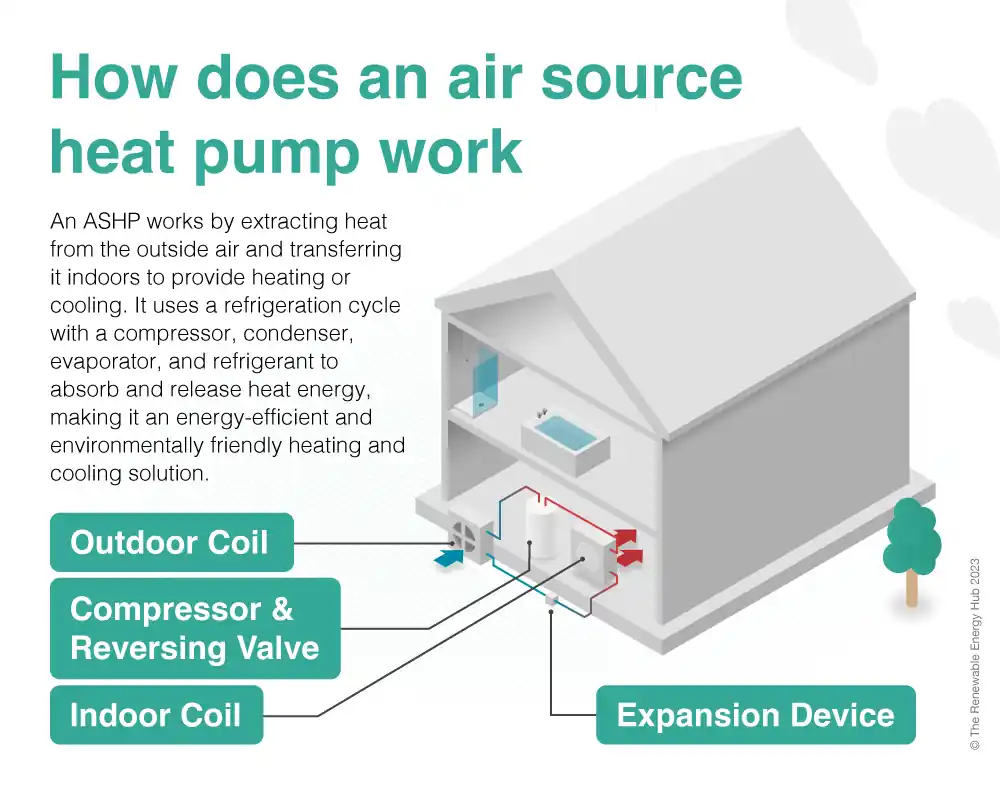
Water source heat pumps:
Water sourced systems, as the name implies, work by extracting heat from a water source rather than from the outside air. Like air, external bodies of water always have residual heat. In fact, water holds more heat than external air. These systems can be site specific as they need to be near a suitable body of water. The water source could be a canal or a local lake or reserviour. To function efficiently, water sourced heat pump systems must be close to the water source. Otherwise they can lose heat through expansive lengths of pipe. As with the other heat pumps we’ve discussed, the heat transfer happens in the same way.
Fun fact when Canary Wharf first opened its doors in the ‘80s, the exhibition centre for the development had a water sourced heating system. This heat pump extracted heat from the water in the docks that surrounded the complex, compressed it and circulated around the arena.
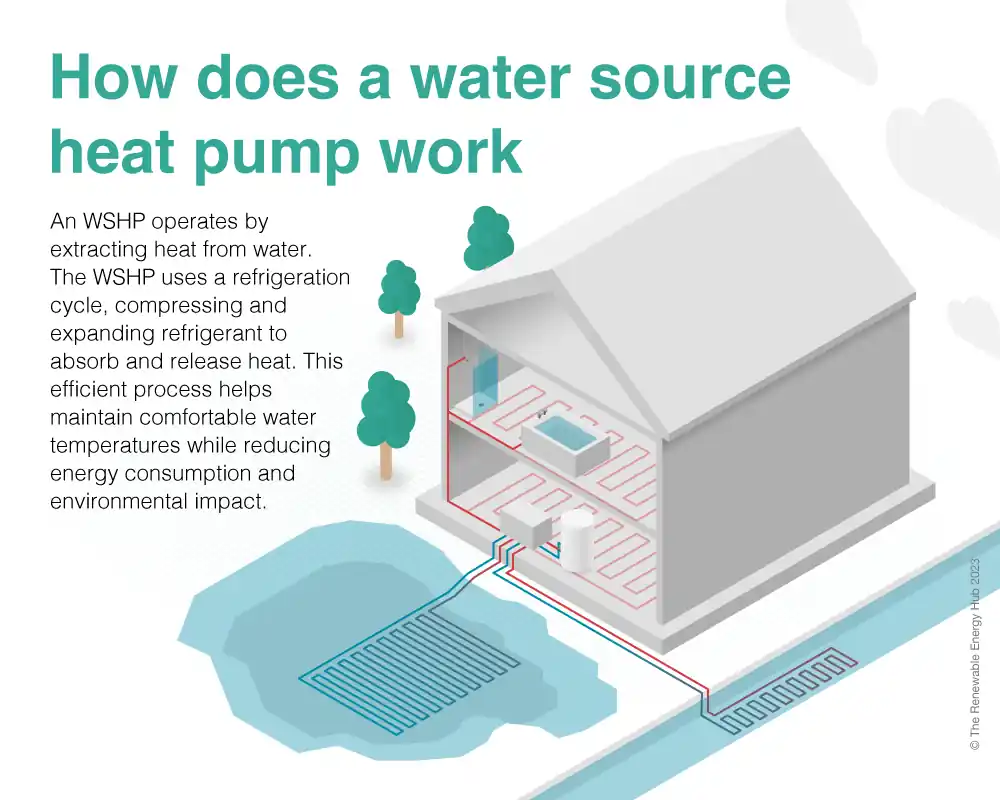
Ground source heat pumps:
Often called geothermal heat pumps, ground-sourced heat pumps work liked water-sourced heat pumps. The difference is that except they extract heat from the ground outside rather than water. Like the source that water-sourced heat pumps draw their heat from, ground temperature is consistent. This means ground-sourced heat pumps can offer the same or better efficiency as water-sourced circuits. In addition, they don’t need a nearby expanse of water. The downside to ground sourced systems is the price. Because they extract heat from underground, they need a lot of preparation. Thos can involve drilling deep boreholes or laying extensive pipework outside the property. Maintenance can also be expensive for the same reasons.
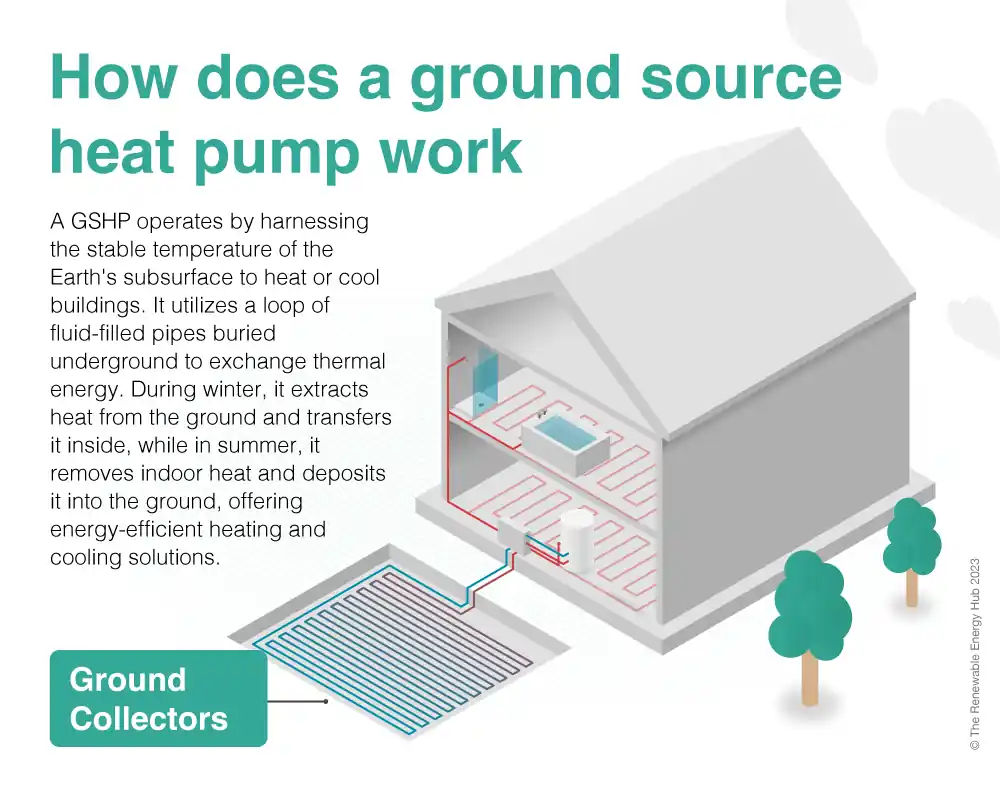
The Pros and Cons of Heat Pumps
Whilst they are not technically renewable technologies because they depend on a little electricity from the mains, heat pumps are a highly efficient way of keeping your house or office building warm. For the UK, where the climate is fairly moderate, heat pumps can work all year round even at the lower temperatures found in our winters. The problem for older buildings is that heat is produced at a lower level than other systems which means that properties which are prone to draughts and are not properly insulated will struggle to keep the right ambient temperature.
Generally, if you have the right property, a heat pump will save you money over oil or gas based heat sources. For instance, an air source heat pump could save you around £440+ a year, though there are a lot variables involved, not least the type of system you choose and the kind of property you have.
The UK government is on a big drive to push heat pump technologies right now. Indeed, they plan to phase out traditional boilers by 2030. So, now is not only a good time to ask if a heat pump is right for you, but it may also be the last chance to go another route.
To help you make up your mind we’ve put together a simple pros and cons list.
Advantages of heat pumps:
- Running cost
There’s no way around this fact, heat pumps should save you a bit of money in the long term. However, we’re putting this factor in both columns because ground-sourced heat pump systems cost a lot more to install. While there isn’t a huge difference between the running costs of a heat pump versus a gas boiler, if you can remove your gas standing order or better yet, power your heat pump from your own solar cells the savings will skyrocket. - Efficiency
Once operational, heat pumps will outperform fossil fuel boilers in every conceivable metric. - Emissions
Another no brainer, because heat pumps only extract existing heat the other emissions generated come from the small amount of electricity required to run the fans and pumps. - Low maintenance
Although more complex to install, and we’ll get to that, the actual mechanics of a heat pumps system are very simple and require far less tinkering than traditional central heating. - Heating and cooling
That’s right, most heat pumps can heat of cool your home. Something your old boiler just can’t compete with. - Safety
Because there’s no combustion, there’s little to no risk of fire of toxic fumes from a heat pump. This can also have a positive effect on your insurance costs too. - Grants and subsidies
As the government has identified heat pumps as a viable way to reduce national emissions it’s keen to support their installation. You’ll find lots of grants, loans and other subsidies to help with the cost of your installation wherever you live.
Disadvantages of heat pumps
- Upfront cost
As discussed, the price of a heat pump system can be a double edge sword. Cheap to run, expensive to fit. However, as mentioned there’s lots of help available if you know where to look. - Complex to install
Some heat pumps are simple to fit but ground based systems in particular are the opposite. If you’re considering a ground-sourced heat pump, be prepared for some pretty hefty disruption. - Ambient noise
While the technology is improving it’s worth remembering that heat pumps do require pumps and fans to work. These mechanisms do, of course, make a noise. Like we said sound levels are improving and you may never hear them, but it’s something to consider if you have sensitive hearing. - Sustainability
We’ve put a question mark here because although the technology is itself considered to be renewable, there are questions over how they are manufactured. - Some like it hot!
If you’re a fan of turning up the dials and basting in the glow of a roaring fire, you may want to skip a heat pump installation. Heat pump systems are better suited to providing consistent comfortable conditions rather than turning things up to 11.
Find out if a heat pump is right for your property and check out our How much do heat pumps cost page.





 How does a Heat Pump Work
How does a Heat Pump Work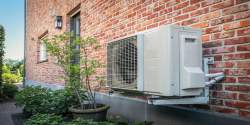




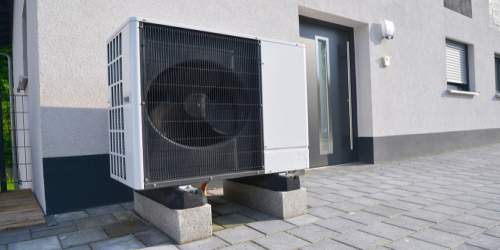
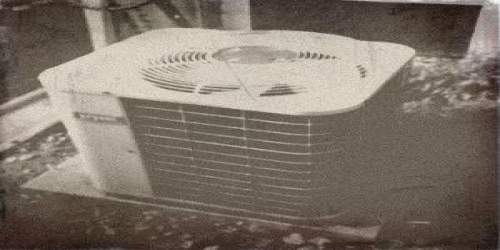



Find a local installer
Welcome to the biggest directory of UK renewable energy companies